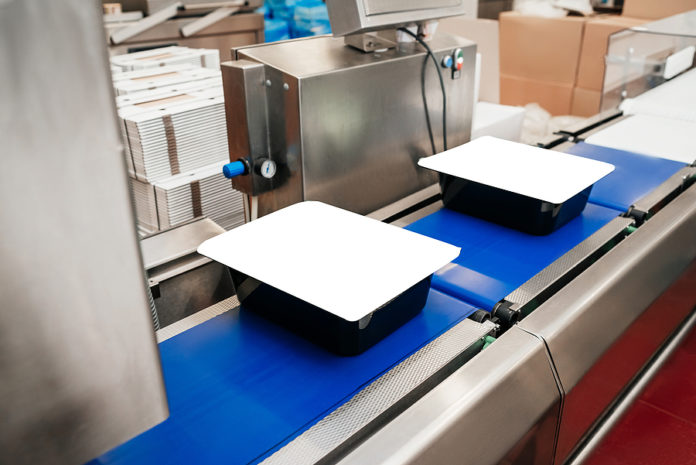
By Chuck Sharbrough, senior vice president, director – food, beverage & agribusiness for Key Equipment Finance
Utilizing modern, well-maintained equipment is imperative for food manufacturers to safely increase productivity, manage operational costs, and remain competitive in their market. Keeping up with the technological advances in food manufacturing equipment can be a costly challenge for companies that plan to purchase the equipment with cash.
For that reason, many growth-oriented food manufacturers choose to finance their equipment – including food manufacturing and processing machines, material handling equipment, and warehousing systems, as well as energy and sustainability projects – which allows them to reap the benefits of state-of-the-art equipment without a large cash outlay.
Types of equipment financing solutions
Financing should be structured to meet each organization’s objectives and goals. Structures include:
Equipment lease. Leasing equipment allows food manufacturers to preserve working capital and lines of credit for other business investments. Any payments required by the vendor may be made by the lender on behalf of the customer. Manufacturers also gain flexibility, as payments can be designed to match budget requirements, and terms aligned with the equipment’s useful life.
Leasing equipment also offers potential obsolescence and depreciation protection, with the ability to add or upgrade equipment during the lease term.
Asset finance. 100% financing includes bundling the equipment with soft costs (i.e. installation, sales tax, freight and maintenance). With this option, processors acquire what they need to manage their business, typically with no advanced payment and one fixed monthly payment. Compare this to a 75% loan-to-value term loan financing, and the advantage is clear.
Customized financial solution. Equipment financing may provide tax advantages. A carefully structured financing plan can maximize equipment depreciation and tax credits while minimizing income tax liabilities.
Not all food manufacturers can utilize the full tax depreciation of their equipment assets. Leasing with a strong financing partner can unlock additional depreciable value in the form of lower payments.
Consider these three things when choosing a financing option
When financing the acquisition of processing, packaging, and transportation equipment and systems, there are several aspects for food manufacturers to consider, including return on investment (ROI), weighing the structure, and choosing your lending team.
- Assess the ROI. ROI will vary depending on whether the equipment is an upgrade or added to increase lines of business. Also, consider how the equipment will impact business operations, and how long newly acquired assets will need to be in production before the business realizes savings or revenue. Lenders should provide guidance related to the equipment’s residual value and useful life, which are key to determining a sound financing solution.
- Evaluate details of each financing option. The business owner should have a clear understanding of the lease conditions, including term, monthly payment, and end of term options, as well as flexibility for paying the lease off early, upgrading technology and adding equipment under the particular agreement. Also, examine the soft costs and whether or not they can be financed. Determine if the lease can be renewed and know how liable the business owner is if the equipment is damaged or destroyed. Learn of any additional fees that will be due during or at the end of the financing period.
- Select a financing team. In the acquisition of food manufacturing equipment, it’s important to consider all available tools. The right financing team should provide all the information needed to make a wise decision to acquire the equipment a business needs to stay competitive in this rapidly changing industry.
Choosing a financing provider doesn’t need to be intimidating or complicated. Here are questions to consider:
- Do they understand my business and how this transaction needs to be customized to meet my business requirements?
- Do they take the time to listen to me and demonstrate an interest in wanting to see my business succeed?
- Do I feel like this financing provider will guide me through the entire process?
- Can they accommodate my needs for customized payments to match my budget?
- Is this a well-established finance team that has survived economic ups and downs?
Business owners should be bold in asking their potential financing provider the tough questions so they can truly evaluate and select the ideal team.
Aligning with the right financing provider and terms may allow businesses to use cash reserves elsewhere. Using financing to invest in technological and related resources to safely increase productivity and gain a competitive advantage in a fast-paced industry can be key to longevity.
 Chuck Sharbrough is senior vice president, director – food, beverage & agribusiness for Key Equipment Finance, with national responsibility for middle market and large corporate equipment finance growth in the food and beverage manufacturing, processing and distribution sectors, and agribusiness processing and equipment sector. Reach him at Chuck.Sharbrough@key.com.
Chuck Sharbrough is senior vice president, director – food, beverage & agribusiness for Key Equipment Finance, with national responsibility for middle market and large corporate equipment finance growth in the food and beverage manufacturing, processing and distribution sectors, and agribusiness processing and equipment sector. Reach him at Chuck.Sharbrough@key.com.
This document is designed to provide general information only and is not comprehensive nor is it legal, accounting or tax advice. KeyBank does not make any warranties regarding the results obtained from the use of this information. Credit products are subject to credit approval, terms, conditions, and availability and subject to change. Key Equipment Finance is a division of KeyBank. Key.com is a federally registered service mark of KeyCorp. ©2021 KeyCorp. All rights reserved. KeyBank is Member FDIC.








